I would just like to set the record straight on tapping Norway Maples for making your own maple syrup. Before embarking on our little front yard maple syruping adventure, I was blissfully ignorant of our tree’s “inferior” status. The large, full tree in front of our condo had been a selling point. The sun filters through the glorious layers of green leaves, filling our front room on the third floor with nature’s dazzling light play. We affectionately refer to our condo as the “treehouse” since it feels like we are up in the canopy.
We learned that it was possible to make maple syrup from only one maple tree, and the tree only grew in our esteem. I started blogging about our experience, and someone online pointed out that our Maple was a Norway Maple, and “he wouldn’t bother tapping that.” (Pretty cool to learn that you can identify a Norway Maple even in the winter by just looking at the bark!) Then a couple neighbors referred to it as a “trash tree” in conversation. I even found the information online to be muddled, with some saying you CAN’T tap a Norway Maple!
Why is the Norway Maple considered a trash tree?
Norway Maples are one of the most common trees found along urban streets. They were widely embraced in the mid-20th century as Elms were falling to Dutch Elm Disease. The Norway Maple was extremely tolerant of urban conditions and grew rapidly, making it a popular choice. As it has turned out, they are extremely prolific and hardy. When their seeds reach forested areas they outcompete the native species (including Sugar Maples) and reduce diversity of the forest with their extremely thick shade. They have now been designated an invasive species.
Unfortunately the tree has also not proven as valuable as expected in the city. The quick-growing wood is weak and prone to rot. This leads to falling branches, which is obviously a problem in an urban area.
I do NOT recommend planting a Norway Maple (and in many areas you could get in trouble for doing so.) However, since they are currently existing (in great abundance) you should know that they are absolutely suitable to tap for maple syrup.
How Much Syrup Can You Get from a Norway Maple?
The “experts” say that you get less syrup from a Norway Maple due to lower sugar content. On a typical Sugar Maple, the ratio is 40 gallons of sap to 1 gallon of syrup. On a Norway Maple this ratio is supposed to be 60 gallons of sap to 1 gallon of syrup. In our experience, the ratio of sap to syrup was about 43 gallons of sap to make 1 gallon of syrup. This is much closer to a typical Sugar Maple. I believe this is because, as I pointed out in my first post on the subject, an urban tree has much more room for crowning of branches than a forest tree, which leads to higher sugar content.
Our Experience Tapping a Norway Maple for Maple Syrup
I’m glad we didn’t know our tree’s reputation before we started, because we would have missed out on the delightful experience of bringing pure maple syrup from our own tree to table. Having had this experience, I would absolutely do it again and surely increase our production having learned a thing or two.
We tapped our tree on February 28. We could have tapped them at least a week earlier, but we came up with a collection system last minute and had to wait for our supplies to come in.
We placed one tap on the north side because it was under a nice big branch, which we had read was helpful for the sap. The other tap we placed on the southern side, which is also generally recommended. We left the taps in for a month. Final collection was March 29th. (North tap had stopped running March 21st.)
We learned that southern exposure trumps the underside of a big branch! The southerly tap produced over twice as much (close to 10 gallons) as the northerly tap (nearly 4 gallons).
We experimented with many different methods for processing this sap into syrup in our home kitchen to find the most practical approach. (Crock-pot? Instant Pot? Stove?) (See all the details here.) In the end we made 5 cups of syrup.
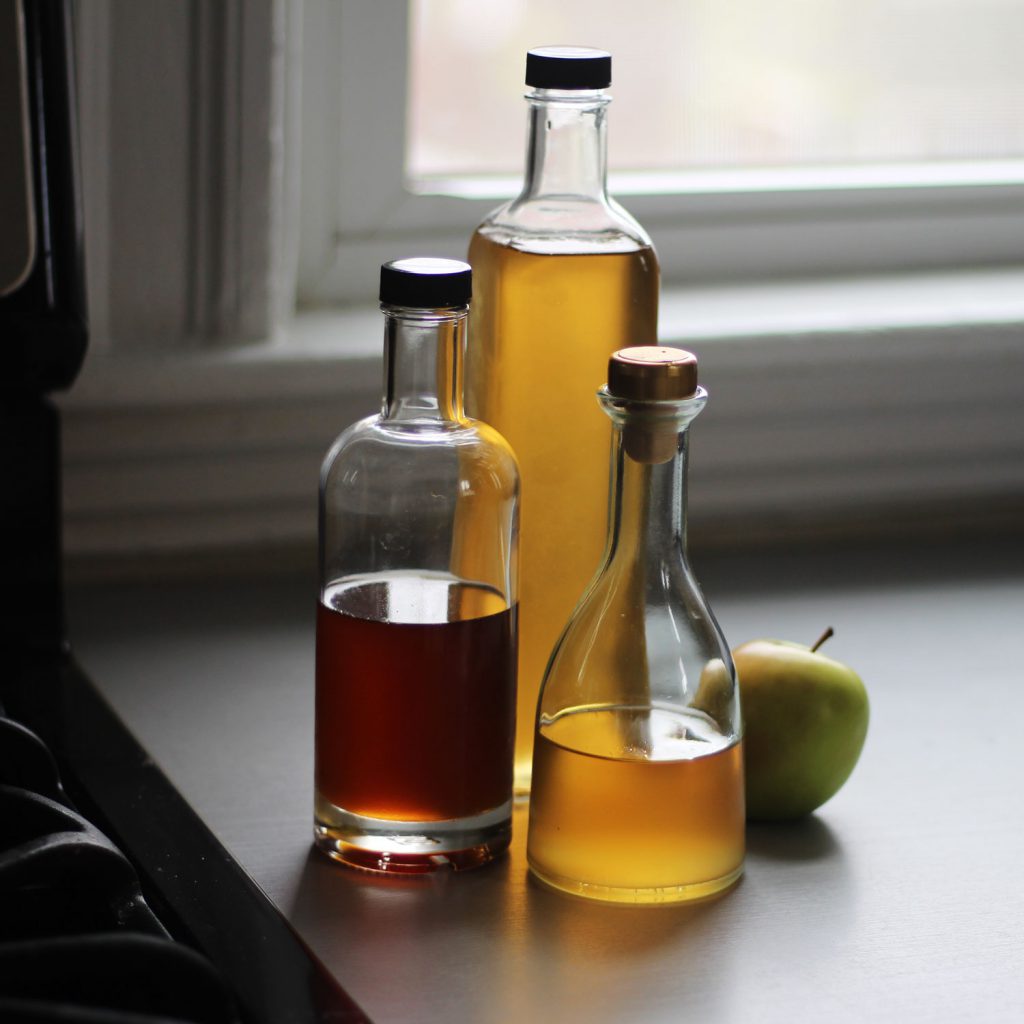
Five cups is not a ton, but certainly enough for many a pancake breakfast. We already hosted our condo-mates for a lovely pancake breakfast and everyone was delighted to try the hyperlocal syrup. The consensus was that Norway Maple syrup tasted very much like the Sugar Maple syrup people were used to and was downright delicious.
Connecting with the neighbors was a nice benefit of the whole experience. Since our Norway Maple is in a highly trafficked area (as most are) we had many curious parties stopping to ask about what we were up to. We met more neighbors in this one-month stretch than in the past 5 years 🙂
What lessons did we learn from tapping the Norway Maple?
I’m pretty confident if we tapped this same tree for maple syrup again we could improve the output to at least half a gallon of syrup. Here’s what we would do differently:
- Tap Earlier — I have since learned that Norway Maples bud earlier than other maples, so you can expect the season to end earlier. Given that, it just makes sense to start earlier since you have an earlier cut-off date. The risk with Sugar Maples is that if you tap too early, the holes will start to close up before a great late Spring run. This is less of a risk for Norway Maples since the season won’t go as long.
- Concentrate on the Southern Side — Viewing other operations, I’ve noticed that even when there are multiple taps on a tree, people tend to clump them on the southern side of the tree. It’s important to move the tap location every year, but I guess it’s possible to do this still on the more productive side of the tree. By simply increasing my low-performing tap to my high-performing tap levels I could have increased my production by over a third.
Do we recommend tapping a Norway Maple?
If you have access to a Norway Maple, I highly recommend tapping it! It’s a great urban homesteading activity. Chances are your Norway Maple also has space for some nice crowning, making it a respectable sugar producer. You will get to experience this age-old American tradition, the delightful taste of pure maple syrup brought from tree to table, and surely make some friends along the way.
Have you tried tapping a Norway Maple? How did your experience go? Please share with us in the comments so we can all learn together!
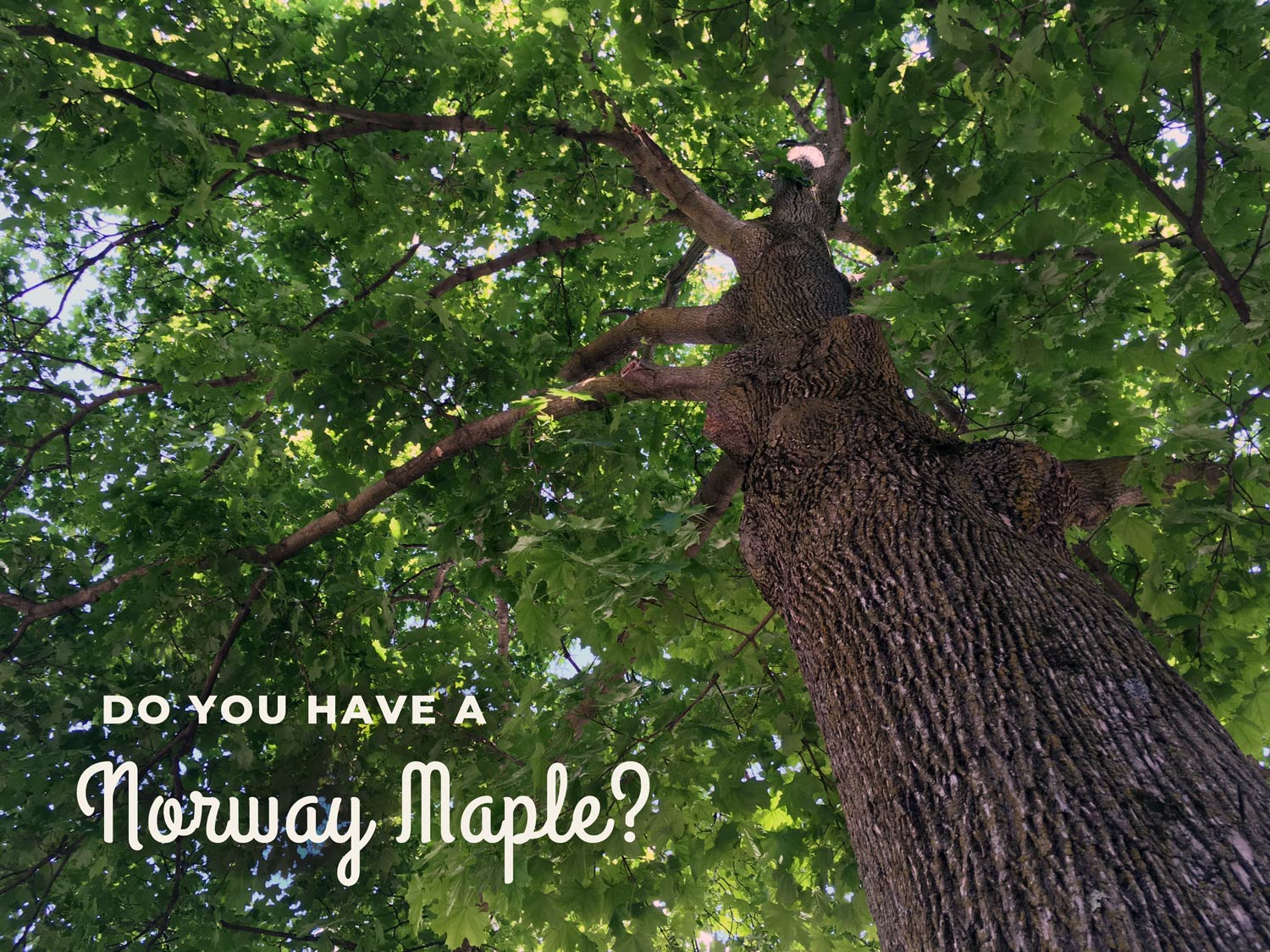
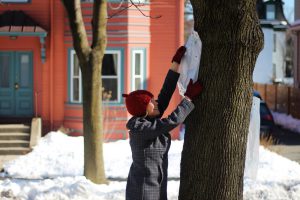
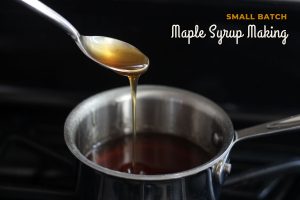
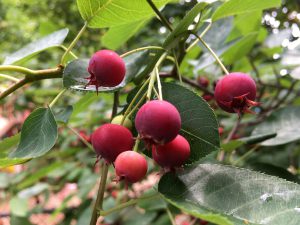
Joe
4 Mar 2020Hello, can you tell me if your syrup turned out more yellow? I think we have Norway Maples and our syrup looks like the two bottles on the right of the picture in this blog posting. Not sure if that’s a stock photo or your actual syrup.
Thanks!
Joe
The Inspired Wife
4 Mar 2020Hi Joe! This is not a stock photo. This is all the syrup that came from our one Norway Maple tree. The syrup changes color over the season, from a golden yellow to a darker brown. As I understand it, it has to do with there being more microbes in the sap as the season goes on and this results in a different enzymatic reaction when the sap boils down. Our first batch was lightest (I think all the earlier batches got mixed together in the two bottles on the right.) Later in the season your syrup should look more like the bottle on the left. Thanks for stopping by and happy tapping!
Nadia
18 Mar 2020Hi,
We tapped a few of our Norway maples on our property this year. What a fun project for the whole family. We boiled to 105 degrees, 7 degrees above the boiling point for our elevation in North Okanagan BC.
Our sap was delicious… but pretty cloudy. Would you say that has to do with the species of maple or our lack of proper filtering? We used cheese cloth and filtered three times during the entire process. Did you filter your sap, if so what did you use? I would love to send you a picture of our finished syrup!
Thanks,
Nadia.
The Inspired Wife
22 Mar 2020Hi Nadia! That’s great your family had fun tapping this year 🙂 I think you mean your finished syrup was cloudy, not the sap? If it is the sap, I’m guessing it was left outside for too long in too warm of weather and spoiled. If indeed you mean your finished syrup was cloudy, I’m guessing that’s because you used cheesecloth. Cheesecloth has large enough holes to allow some of the niter to go through. You can fold it up a few times so it’s going through multiple layers at once, but it’s not going to filter as well as say, a felted wool filter. Those are the most recommended, but I’ve just used either coffee filters or none at all. Sometimes it will be a little cloudy, and then that will settle out over a number of days. It will collect on the bottom as niter, which you can see a picture of in this post. For home use, this doesn’t bother me too much. If you want purer syrup though, I would recommend a better filter. Maybe something like this. Oh, and feel free to send a pic of your finished syrup to thisinspiredwife (at) gmail.com 🙂
Kian
22 Mar 2020Hello. I tapped my two young Norwegian maples and got a syrup that tastes very much like caramel, not maple syrup. I was told last year that it’s because I did it late in the season (almost April) but then the color should have been dark too but it was very light. Anyhow I tried again this year, in early/mid March instead, and got the same result – light colored caramel :)). Wondering if anyone has thoughts. I am in southern Ontario.
The Inspired Wife
27 Mar 2020Hmm, that’s really interesting. I know maple syrup is often described as having a “hint of caramel” or “caramel overtones” and I would say that’s definitely true of Norway Maple syrup too, but it sounds like you’re talking about something stronger than that. I wonder if the sap sat too long before boiling? I read someone report that they boiled older sap and it had more of a molasses flavor. The other possibility I wonder about is if you boiled it too long and the caramelization process went on for too long. If you also had crystallization this might be the case.
David
5 Jan 2021Yes! Caramel! This is the predominant flavor that I get year after year from the 200 plus Norway trees I tap annually
Kian
27 Mar 2020Thanks for the response! I left the jar out for a week to fill up. Is that too long? It was above freezing temperature during day and below at night. And then the boiling took a couple of hours. May be that’s too long?
The Inspired Wife
2 Apr 2020A week sounds a bit long, depending on how high it gets above freezing. You will know the sap has gone bad if it’s cloudy. People will still boil that down with varying degrees of success though.
IAN LUSSIER
29 Mar 2020I have made maple syrup all my life and I prefer tapping Norway maples over sugar maples where I live in coastal Maine. In my experience although you have to boil down slightly more sap (42 to 1) for a gallon of syrup, Norway maples pump more sap per tap than most of the sugar maples I have tapped. Given the choice I’d tap the Norway every time!
The Inspired Wife
1 Apr 2020Thanks for sharing your experience, Ian! Interesting you have a direct comparison in the same location. Curious how much more sap your Norway pumps out than your Sugar Maple?
David Knudson
5 Jan 2021I tap Silver, Sugar, Box Elder, Black Walnut and Birch here in Western Montana. I boil all the saps separately and bottle them by species. The Norway does change in flavor quite a bit through the season, where as the silver and sugar stay more consistent. I prefer the rich caramel flavors as well; and I am scrupulous about boiling my sap within hours of collection in order to get the highest quality product.
The Inspired Wife
9 Jan 2021Thanks for sharing your experience David! I’m hoping to do a comparison like this too now that we have the real deal Sugar Maples and some Box Elders too.
Scott
5 Feb 2021Interesting comment about the crown size and the saps sugar %. Do you have any links to research or is that annecdotal? I plan to tap 2 sugars and 1 Norway hopefully later this month so maybe I will be able to back this up
The Inspired Wife
28 Feb 2021Yes! So interesting! Here’s a quote from one source: “Trees growing along roadsides, in lawns, or in open settings, where their crowns have grown large without competition from other trees, generally produce more and sweeter sap than forest-grown trees.” (https://extension.psu.edu/maple-syrup-production-for-the-beginner) and I was also just reading this: “Sap production in a sugarbush relies on developing and maintaining large, spreading crowns in maple trees.” from this source: https://extension.unh.edu/goodforestry/html/8-3.htm. You don’t have to manage for these crowns in an urban setting, as it is usually simply the case. I hope your tapping is going well!